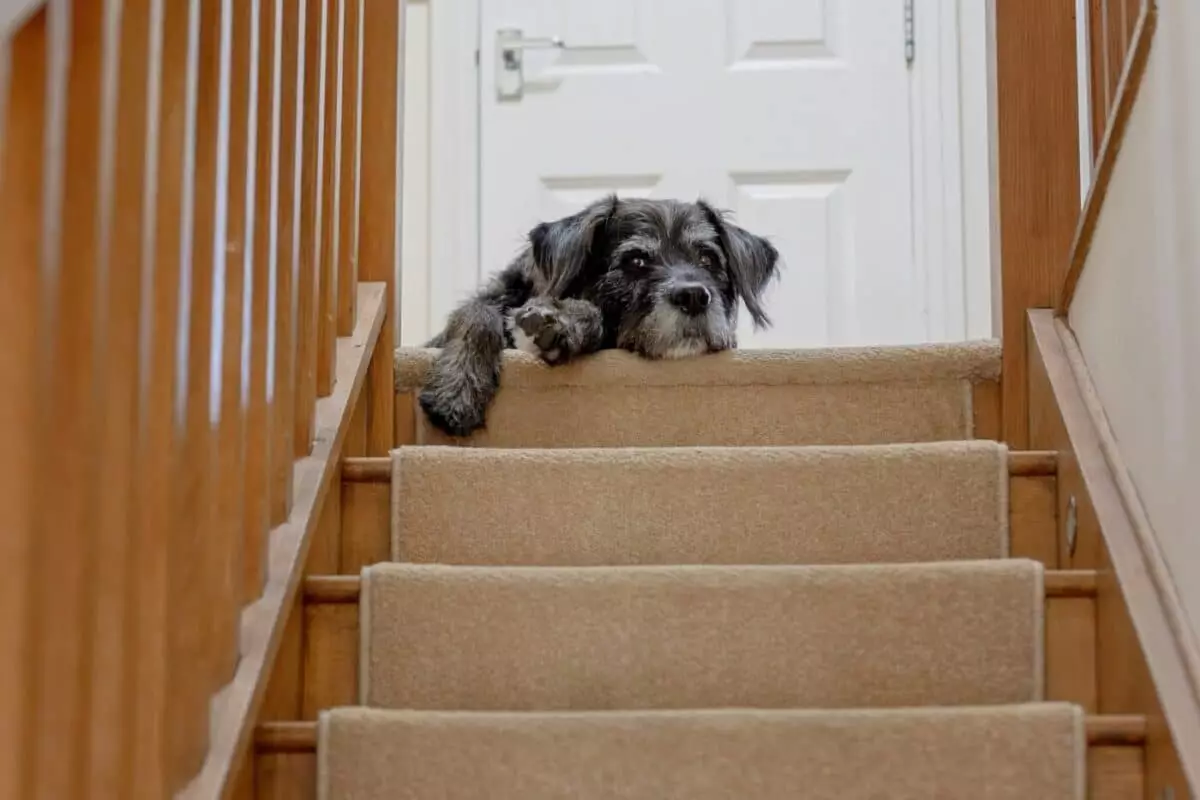Dogs, much like humans, can have a variety of anxieties and fears that manifest in unexpected ways. One common scenario that many dog owners encounter is their canine companion hesitating or outright refusing to ascend or descend a staircase. While this may initially appear peculiar, it actually taps into various underlying reasons that might explain such behavior. Understanding the roots of this fear can help owners support their pets in navigating stairs safely and confidently.
One of the primary factors contributing to a dog’s fear of stairs is a lack of exposure during critical periods of their development. Puppies go through crucial stages of learning where they become accustomed to their environment. If stairs are absent during these early formative years, dogs may lack the necessary experience and confidence to navigate them. This unfamiliarity translates into anxiety and hesitance. For dogs that don’t encounter stairs until they are older, the thought of climbing them becomes an intimidating challenge rather than a trivial part of daily life.
Interestingly, some dogs have an inherent fear of heights, which can be triggered by the act of climbing stairs. From their perspective, the ascent can feel precarious, particularly when confronted with steep angles or high steps. Small breeds, in particular, may feel disproportionately vulnerable when faced with height; their instinct to avoid risk and danger can often result in an unwillingness to climb. This instinctive hesitation can deeply affect a dog’s willingness to engage with staircases, turning what might seem mundane to humans into a source of significant apprehension.
Vision plays a pivotal role in how dogs perceive their environments. Some dogs experience visual impairments or challenges with depth perception, rendering stairs a daunting prospect. For instance, dogs suffering from conditions like cataracts or glaucoma may find it hard to see the edge of the stair, which can generate fear of tripping or falling. In older dogs, these visual issues can prevent them from accurately gauging the distance between steps, making the whole staircase seem like a minefield rather than a simple ascent.
Physical discomfort can also contribute significantly to a dog’s aversion to stairs. Many dogs experience joint pain, mobility issues, or degenerative conditions like arthritis that can make climbing stairs a painful endeavor. For dogs already suffering from such conditions, the act of going up or down can become synonymous with discomfort and distress. Over time, they naturally associate stairs with their struggles, leading to a complete avoidance of these physical challenges.
Like humans, dogs also carry emotional scars from past traumas. If a dog has had a negative experience on stairs, such as slipping or falling, they may develop a long-lasting fear associated with them. Even a single bad incident can lead to a generalized anxiety around stairs, particularly if they happened to be in a vulnerable state during the experience. The memory of that fall could resurface whenever they approach a staircase, inciting immediate apprehension and refusal to proceed.
Some breeds inherently distrust uneven surfaces. In the wild, uneven terrain can signify danger, leading dogs to instinctively be more cautious when faced with stairs. The requirement to navigate multiple levels can disrupt their sense of ground stability, making them wary. For many dogs, the instinct to evade potential hazards can override the urge to climb, rooted deeply in their evolutionary history.
Certain breeds are particularly more prone to stair apprehension due to their physical makeup and genetic predisposition. Breeds with short legs and long bodies, such as Dachshunds and Corgis, are structurally compromised when it comes to climbing stairs. Climbing can exacerbate pre-existing back issues, which only deepens their fear. Similarly, anxious breeds, which are often more sensitive to changes in their environment, can be predisposed to fear unfamiliar tasks like hopping up and down stairs.
Building a dog’s confidence is essential in overcoming stair fear. Dogs that exhibit traits of timidity or insecurity may feel overwhelmed by unknown challenges, making staircases one of these obstacles. Engaging in positive reinforcement training can help bolster a dog’s self-assurance, enabling them to tackle stairs more effectively. The key lies in patience and incremental exposure, which can ease apprehensions and foster a sense of accomplishment.
The materials that compose stair surfaces can also impact a dog’s comfort levels. Hardwood or tile steps can pose a slipping hazard, resulting in anxiety for dogs uncertain about their grip. A bad experience on a slick surface may lead them to avoid those steps entirely. Additionally, stairs that are narrow and enclosed can trigger feelings of claustrophobia, leading a dog to perceive the area as trapping or unsafe.
As dogs grow older, they may undergo cognitive decline similar to dementia in humans. This cognitive dysfunction can create a disconnect between their previous knowledge and their current abilities, resulting in confusion or fear concerning familiar tasks like climbing stairs. Older dogs may find themselves hesitant or lost in the middle of staircases, leading to a lack of confidence and increased anxiety around what was once a routine act.
The next time you see your dog hesitate at the base of a staircase, remember that their behavior is not merely due to laziness, but rooted in complex emotional and physical reasons. By understanding the underlying fears and concerns that your dog might have regarding stairs, you can take meaningful steps to help them conquer this challenge. Both patience and appropriate training will allow dogs to gradually become more comfortable navigating stairs, ensuring their safety and their emotional well-being in the process.


Leave a Reply